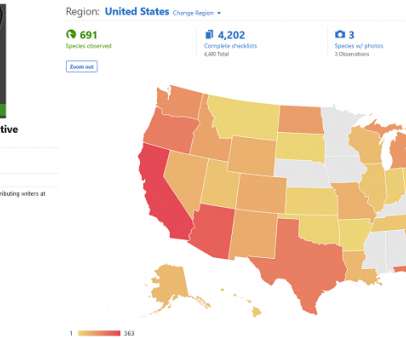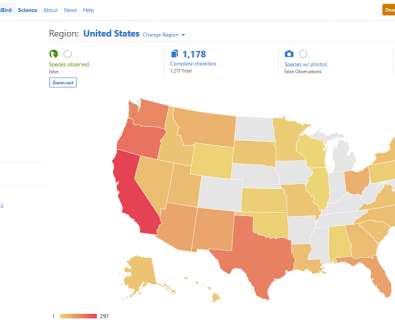10,000 Birds goes eBirding – Part II
10,000 Birds
DECEMBER 14, 2021
Not far behind is California (348, up from 297), followed by Arizona (294, up from 155), Florida (233, up from 227), New Jersey (223, up from 199), Oregon (221, up from 209), and Texas (218, up from 106). Some are all three ( e.g. , New York, California, and Florida). Thus, there are now seven states with 200+ observed species.













Let's personalize your content